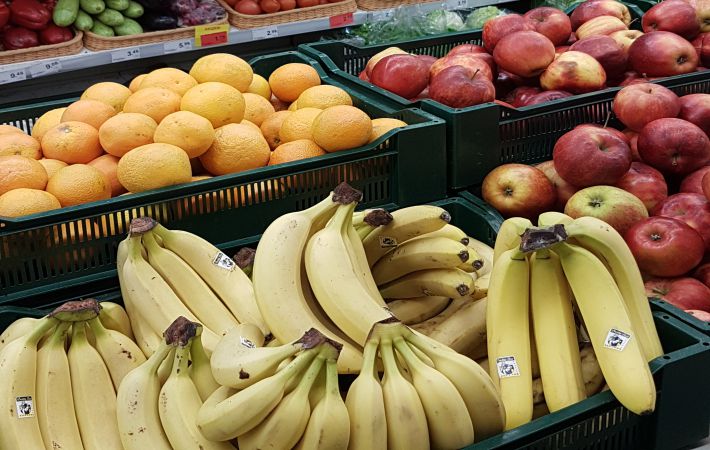How to choose truly ripe fruits and vegetables in the store: important points
Often, you can find not quite ripe specimens on the shelves, which you can’t immediately recognize.
What to look for when choosing?
If you intend to enjoy strawberries and buy them from the store, do not be fooled by the red color of the berries and their large size.
Truly ripe strawberries are determined as follows: look at their upper part, located under the sepals. If it is white, such berries are better put back: they have not yet reached true ripeness. And do not be afraid to take small strawberries, because they can be very tasty and juicy.
In the same way, the red color of apricots does not indicate normal quality and ripeness. To choose the best specimens, remember one or two in your fingers: the firmness of the fruit will indicate ripeness.

An apricot that has ripened to an optimal state will yield slightly to pressure, but at the same time its flesh under the skin is dense and the fruit will not fall apart in your hands.
As for color, it is preferable to choose apricots that are uniformly colored yellow or orange.
When choosing nectarines, you should focus on their appearance and variety. Do not think that the red skin of these fruits indicates that nectarines are ripe, because depending on the variety, it can also be yellow. But a fruit of this color is no less tasty and healthy. The main thing is that there are no spots or rot on the nectarine skin.
It is easy to check the ripeness of a pear by pressing lightly on its top. A hard pear will indicate that the fruit is not ripe, too soft - that it is overripe.
If the pear gives slightly under your fingers when you press it, then it is definitely safe to take. And, of course, inspect the fruit from all sides.
One of the most beloved summer berries is gooseberry. Its ripeness is determined not by the color of the berries, but by the condition of the flower stalk: if it is green, then the berries are most likely not ripe yet.
Brown and dry-looking stems will hint that the gooseberry is ready to eat. And light sour notes in the taste should not confuse you, especially in the case of berries that are green: this sourness is a feature of the gooseberry variety.
Another delicacy that appears on the shelves in the summer is cherries. As with gooseberries, the most delicious berries are usually not those that are bright red or burgundy: tasty and ripe cherries can be slightly pale.
Evaluate the glossy surface of the berries, the stems and the firmness of the fruit. On ripe cherries, the stems of the berries are usually green, not brown.
Looking for tasty and ripe spinach? It is better to buy the one that is stored in the store refrigerator, and not on the open counter. Evaluate whether there are droplets of water or light condensation inside the package with spinach. High-quality spinach has a dark green color, and there are no wilted leaves in the package.
To buy tender and juicy young green peas, sold directly in the pods, look at the appearance of the pods themselves. Ripe specimens have a shiny, dark green skin and are not covered with unpleasant spots.
A zucchini that is truly ripe and ready to eat is not necessarily large. Large zucchini often taste either watery or bitter. Therefore, when buying, choose not the largest, but firm and smooth zucchini.
To attract customers to their products, manufacturers of bagged lettuce sometimes add a note to the packaging stating that the lettuce was washed before packaging. Should we believe this? Believe it, but with caution.
Firstly, lettuce leaves are often washed with chlorine added to the water, and secondly, bacteria on lettuce packed in a bag also multiply, and much more intensively than on lettuce sold in pots. Therefore, it is better to give preference to the second option of leaf lettuce.
And finally, to prepare a salad or borscht from fresh cabbage, the freshness of the head of cabbage is determined by how smooth and clean its upper leaves are and how tightly they fit the head.
Knock on the head of cabbage you have chosen, assessing its elasticity and density. If the cabbage feels like cotton wool to the touch, and the upper leaves are covered with small spots or are wilted, then it is better to leave such a specimen in the store.
Earlier we told you how to clean your microwave quickly and easily.
